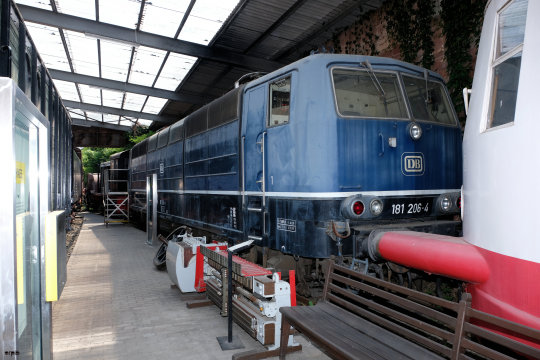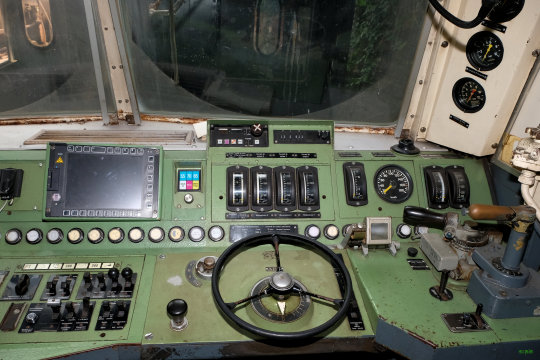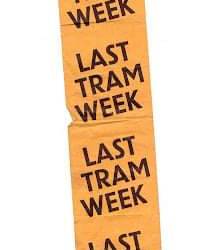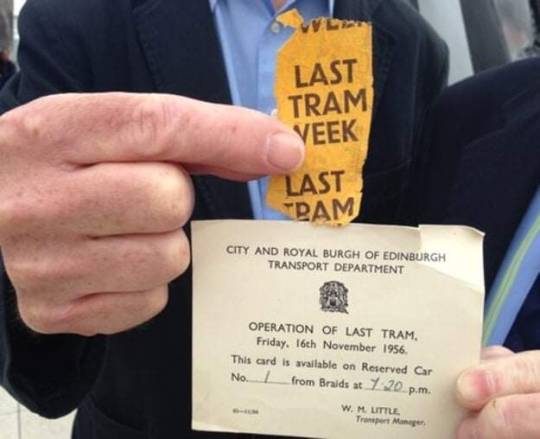#The Catenary Wires
Explore tagged Tumblr posts
Text










#san francisco#public transit#trolley wires#overhead catenary#trolley bus#muni#this the kinda shit im on fr#me fr#anti cager action bureau
2 notes
·
View notes
Text
So what if the villain is drunk with power, I can that too,
*tries to eat a catenary wire and dies instantly*
124 notes
·
View notes
Text
research tips for electric train whump:
-INDUSTRIAL MAINTENANCE SOURCES ARE YOUR FRIEND! There’s not much stuff specifically about trains but basic concepts (maintenance and repair of AC or DC motors, transformers, rectifiers, other heavy electrical equipment) largely carry over from sources about elevators or substations. There’s a lot of good videos on youtube about these topics, look into stuff aimed at apprentice electricians or industrial maintenance, it will generally be more visual/metaphor and less math-heavy if you struggle with that.
-many “breakdowns” are actually due to power infrastructure issues- third rail and catenary wires have different problems and these further vary based on how old they are. Fixed-tension catenaries on the former Pennsylvania Railroad are a notorious issue. The more modern the line, the less weird stuff you’ll have, but much of the US, parts of the UK, and a number of spots in mainland Europe have more unusual and antiquated electrification systems. And this is also an issue with model trains between brands and eras!
-On a related note, pantograph designs have varied by time and place and have different advantages/disadvantages/issues. You even have times when they have a uniquely bad time with old catenaries, like old Comet EMUs specifically getting snarled in those constant-tension PRR catenaries
-Never underestimate how “dumb” and un-computery a lot of electric trains actually are, especially circa the 80s. “Toaster” isn’t even an inaccurate insult for older DC-motor trains, they literally brake using huge resistors that put out a ton of heat… like a giant toaster. And the really old, simple stuff tended to last a stupidly long time in service so you can 1000% wave off a 20s-era engine or EMU in the 80s.
-If you want some really easy ones that have actually happened before: connecting to too strong of a power source and getting FRIED, and having wires ripped out willy-nilly by techs not familiar with electric trains that don’t know what they’re doing. Weaponized incompetence with anything electrical checks out with how even a lot of train people know very little about it and don’t care.
-model trains also have a lot of beginner-friendly electrical info you can work from
#stex#starlight express#a lot of this stuff also applies to diesel-electric engines (which is almost all diesels)#they just have an engine as a generator vs connecting to an external power source#older electric locomotives will have a lot more in common with appliances or factory machinery than computers#rail is generally technologically conservative since it’s VERY heavy duty and high reliability and likes to reuse vs replace#it’s actually really handy to know the basic electrical stuff that goes into them because it’s applicable to tons of everyday stuff
21 notes
·
View notes
Photo


Zweisystemlokomotive 181 206-4 der Deutschen Bundesbahn für den grenzüberschreitenden Verkehr nach Frankreich und Luxemburg. Die Lokomotive ist für die unterschiedlichen Stromversorgungen ( 15 kV / 16 2/3 Hz oder 25 kV / 50 Hz) und Höhen des Fahrleitungsdrahtes ausgerüstet. Dafür verfügt sie unter anderem über zwei unterschiedliche Stromabnehmer um in den obengenannten Einsatzbereichen fahren zu können.
Diese von Krupp 1974 unter der Fabriknummer 5272 gebaute 3000kW starke Lok ist seit 2020 eine Museumslokomotive im Pfalzbahnmuseum Neustadt an der Weinstraße
German Federal Railways dual-system locomotive 181 206-4 for cross-border traffic to France and Luxembourg. The locomotive is equipped for the different power supplies ( 15 kV / 16 2/3 Hz or 25 kV / 50 Hz) and heights of the catenary wire. For this purpose, it has two different pantographs, among other things, in order to be able to run in the above-mentioned areas of operation.
This 3000 kW powered locomotive, built by Krupp in 1974 under the serial number 5272, has been a museum locomotive in the Pfalzbahnmuseum Neustadt an der Weinstraße since 2020.
#dampflokblog.de#181 206-4#BR181#BR 181#Zweisystemlokomotive#Elektrolokomotive#E-Lok#museumslok#locomotora#locomotive#lokomotywa#Eisenbahnmuseen & Betriebshöfe#Railway Museums & Depots#Eisenbahn#Railway#鉄道#локомотив
47 notes
·
View notes
Text
Dwi'n dechrau deall mwy pam dwi'n gwrando ar y radio yn Gymraeg y dyddiau hyn. Dwi'n gwella yn araf, ond yn bendant. Ro'n i'n gwrando ar BBC Radio Cymru, ar y sioe Rhys Mwyn, cyflwynydd (wrth gwrs) a cerddor bwysig i'r sin roc Gymraeg o'r 80au a 90au.
Heddiw, wnes i ddysgu bod: Oedd Huw Williams, aka Hue Williams/Hue Pooh o'r band Pooh Sticks, y manager i fand Big Leaves am gyfnod. Oedd Huw ar y radio nawr achos ei fand newydd Swansea Sound yn rhyddau sengl newydd am recordiau a siopau record, enw Markin' It Down. Mae band yn cynnwys Huw, Amelia Fletcher (oedd yn y band 'c86' indie, Heavenly, a wnaeth hi ganu gyda Huw ar gyfer Pooh Sticks yn y 90au) a Rob Pursey (yn y band Catenary Wires gyda Amelia yn fwy ddiweddar), ac eu sengl newydd yn ddoniol iawn. Cwsmer mewn siop record yw Huw, a mae fe'n trio bod yn 'cwl' a 'hip' gyda blas miwsig da, yn chwilio am albwm ddiweddaraf Yard Act, ac mae fe'n siarad gyda gweithiwr yn y siop (Amelia) am y recordiau, ac mae hi'n ddweud bod mae recordiau yn y discount bin, mae hi'n 'marking it down to £11'. (Dwi'n gwirfoddoli ar radio cymunedol, so mae Amelia wedi anfon y sengl i fi hefyd eto, ro'n i'n hapus iawn amdano fe!)
Wnes i ddysgu bod 'cyhoedd' yw public, a cyhoeddiad yn announcement, hefyd.
A meddai Rhys, Cadwch yn saff, stay safe!
#meddwl yn Gymraeg#don't take this as the standard of good welsh; I'm just really trying to practise here
10 notes
·
View notes
Note
Eelektross in Hisui AU idea, I know we are still in the "events prior to Ingo showing up as the plot solution" but the idea of Ingo's and his beloved but Horrible Wet Guard Dog, that is almost overpowered for the setting (modern professional fighting pokemon have access to all the food, training and potions/ healthcare they need and research has figured better training methods like IV and EV, their only weakness is they follow Stardard Battle Rules like No cutting turn order or no mob Vs one guy) Anyways Ingo only somewhat remembers Eelektross (You have to have Ingo remember eelektross's train pun nickname, I recommend Catenary which is the wires that power electric trains/trolleys) So we have this Legendary Monster that terrorized and chased people for Weeks sitting in Ingo lap being scratched behind the ear(?) fins, wiggling in happiness, while Meille in the background is recovering from being electricuted (Ingo Did Not want to be Touched and eelektross Will make sure that is Respected)
Oh Ingo definitely doesn't remember Eelektross. Though, as you said, he finds him to be verrry familiar and is way more understanding of his behavior than others. I think it'd take even Akari and Laventon some time to stop seeing Eelektross as a wildly territorial pokemon. Ingo, meanwhile, picks up on the fact that his playful and friendly demeanor and behavior are being mistaken for aggression almost right away.
Ingo himself struggles to explain WHY he's able to make this connection beyond just stating that he somehow KNOWS and chalking it up to some kind of intuition. Regardless Eelektross is thrilled to finally find someone he now only knows, but who doesnt treat him either as a beast or some subject of research. So their relationship is relatively good. Whether or not Eelektross tries to help with Ingo's memory loss or is content with just watching over him is still up in the air atm tho he'd definitely grow verrrrry protective of Ingo after everything he's been through.
Eelektross is also definitely OP. Not just due to all the training, but because his species is a complete unknown in Hisui. I mean there aren't that many species in Hisui who can boast having no natural weaknesses in legends arceus especially if one considers Eelektross has a hand on his natural abilities (levitate) in a way that trainers and pokemon in the past dont quite have gives him a unique advantage.
As you say though, this is a double edged sword. Eelektross does NOT do well alone in the wild. Despite being well trained, in prime condition, and very powerful hes been raised taking direction from a trainer and while he does draw on certain memories of strategies Emmet came up with and used in the past, he doesnt have the skill to come up with any strategies of his own. Beyond that he has always been entirely reliant on humans for food, shelter, etc. and so fails in the wild because of that as well.
In fact, its that reliance on humans that more or less causes him to be mistaken as an aggressive creature in the first place.
I don't know about nicknames as I rarely ever give Ingo and Emmets pokemon nicknames (one exception being Ingos Excadrill eventually earning the nicname "Nana" in his absence but thats from a whole other concept) but calling him "Catenary" will certainly make things easier.
Feel free to send an Ask
#submas#pokemon#eelektross#ingo#emmet#pokemon eelektross#pokemon ingo#pokemon emmet#subway boss ingo#subway boss emmet#warden ingo#Eelektross in Hisui
66 notes
·
View notes
Text
Key Design Considerations for Pantograph Support Insulators in High-Speed Rail Systems
In the realm of high-speed rail systems, every component plays a crucial role in ensuring safe and efficient operations. Among these components, pantograph support insulators stand out as critical elements that facilitate the seamless transmission of power from overhead lines to the train's electrical system. As a leading pantograph insulator manufacturer in India, Radiant Enterprises recognizes the importance of meticulous design considerations in crafting reliable and durable insulators. In this blog post, we'll explore the key design considerations essential for pantograph support insulators in 25 KV high-speed rail systems, shedding light on Radiant Enterprises' commitment to excellence in manufacturing.

Understanding Pantograph Support Insulators
Pantograph support insulators are integral components of the overhead electrification system in high-speed rail networks. These insulators provide electrical isolation and mechanical support for the pantograph, which is the apparatus mounted on the train's roof responsible for collecting electricity from the overhead wires (catenary). In 25 KV high-speed rail systems, where trains operate at exceptionally high speeds, the performance and reliability of pantograph support insulators are paramount.
Design Considerations for Pantograph Support Insulators
Material Selection: The choice of materials significantly influences the performance and longevity of pantograph support insulators. At Radiant Enterprises, we utilize high-quality, durable materials such as silicone rubber or composite polymers that exhibit excellent electrical insulation properties, mechanical strength, and resistance to environmental factors such as UV radiation, pollution, and temperature variations.
2. Electrical Insulation: Ensuring reliable electrical insulation is paramount to prevent electrical arcing and ensure the safe transmission of power. Our pantograph support insulators are engineered to withstand high voltage levels (25 KV) and exhibit low electrical conductivity to minimize power losses and mitigate the risk of electrical faults.
3. Mechanical Strength: Pantograph support insulators are subjected to mechanical stresses induced by the pantograph's movement and external forces such as wind loads and vibrations. Therefore, our insulators undergo rigorous mechanical testing to ensure they can withstand these forces without deformation or failure, ensuring uninterrupted operation and minimal maintenance requirements.
4. Corrosion Resistance: In outdoor environments exposed to moisture, pollution, and corrosive agents, corrosion resistance is essential to maintain the structural integrity of pantograph support insulators over their operational lifespan. Our insulators are engineered with corrosion-resistant materials and undergo surface treatments to enhance their resistance to rust and degradation, ensuring long-term reliability and performance.
5. Dimensional Accuracy: Precision engineering is critical to ensure proper fit and alignment of pantograph support insulators with the overhead wires and the train's pantograph. Our insulators are manufactured with tight tolerances and undergo strict quality control measures to guarantee dimensional accuracy and compatibility with the rail infrastructure, minimizing installation challenges and optimizing performance.
6. UV Stability: Exposure to ultraviolet (UV) radiation can degrade insulator materials over time, compromising their electrical and mechanical properties. Therefore, our pantograph support insulators are formulated with UV-stabilized materials that withstand prolonged exposure to sunlight without degradation, ensuring reliable performance and longevity in outdoor applications.
Radiant Enterprises: Your Trusted Pantograph Insulator Manufacturer in India
As a leading manufacturer of pantograph support insulators in India, Radiant Enterprises is committed to delivering superior quality products that meet the stringent requirements of high-speed rail systems. Our state-of-the-art manufacturing facilities, coupled with a team of experienced engineers and quality assurance experts, enable us to design and produce pantograph insulators that excel in performance, reliability, and durability.
Conclusion
In the dynamic world of high-speed rail systems, the reliability and performance of pantograph support insulators are critical for ensuring safe and efficient operations. By adhering to meticulous design considerations such as material selection, electrical insulation, mechanical strength, corrosion resistance, dimensional accuracy, and UV stability, manufacturers like Radiant Enterprises can deliver pantograph insulators that meet the demanding requirements of 25 KV high-speed rail systems. As a trusted pantograph insulator manufacturer in India, Radiant Enterprises is committed to providing innovative solutions that contribute to the advancement of railway electrification technology and the seamless operation of high-speed rail networks.
#Customised epoxy insulators manufacturer in India#Pantograph insulator manufacturer in India#25 KV pantograph support insulators manufacturers in India#25 KV roof busbar support insulator manufacturers in India#Solid third rail insulator#Customized Powerrail Epoxy Insulators#Epoxy Insulators#Epoxy insulator manufacturers in India
7 notes
·
View notes
Text





On November 16th 1956 the last of the original trams ran in Edinburgh.
Sixty five years ago this evening, thousands turned out to wave an emotional goodbye to the city’s original tram system before it was scrapped.
Trams had been falling out of favour across the country since the end of the Second World War. Cities were expanding, and the rail-and-wire-bound trams of yesteryear could not compete with the flexibility and cost-effectiveness of the modern motor bus. Municipal tramways up and down the country faced the heavy axe of progress.
The decision to decommission Edinburgh’s tram network arose in 1952, its 47 miles taking just four years to dismantle.
In the last week, a special service painted handsomely in white and gold livery was laid on to tour what was left of the old network.
All ordinary tram passengers were issued with a bright yellow “Last Tram Week” ticket; a masterstroke by Edinburgh Corporation which did a “roaring trade” in the final seven days.
The last hurrah arrived on Friday, November 16; a suitably cold, grey and miserable day. That evening, a procession of tramcars made its way from the Braids terminus to Shrubhill depot, taking in much of the original 1871 route. Ten trams were laid on due to the demand – one car containing the very city councillors who had consigned the trams to the history books in the first place.
It seemed that the entire city was out in force that night; throngs of people lined the pavements and eager spectators hung out of tenement windows to catch a glimpse of the historic procession.
Motor cars and buses added to the atmosphere by tooting their horns.
At the Mound and Hanover Street, an enormous crowd reaching 60 or 70 yards up the road gathered to wave goodbye to the last cars.
Police, mounted and on foot, kept the mass of spectators from pressing against the vehicles. Souvenir-hungry “boys and youths” armed with screwdrivers were reported aboard the final convoy, keen to secure their own little bit of history from the inside of the cabins.
Regardless of whether you lamented their passing or were glad to see them vanish, it was certainly the end of an era. From the earliest horse-drawn trams and cable cars of the turn of the century, to the electric system implemented in the 1920s, tramcars had been present in the Capital, in one form or another, for generations.
Eighty-five years of municipal tram history, which at its height had carried around 200 million passengers a year on routes covering Corstorphine to Levenhall, and just about everywhere in between, had been consigned for good to the great catenary wire in the sky... or so we all thought.
17 notes
·
View notes
Text
Pantograph Insulators: A Crucial Element in Overhead Contact Systems
Pantograph insulators play a crucial role in ensuring the effective operation of overhead contact systems (OCS) utilised in diverse transportation modes including trains and trams. These insulators serve the purpose of establishing a dependable and secure electrical connection between the catenary wires and the pantographs on mobile vehicles. This article examines the importance of pantograph insulators and emphasises the Pantograph insulator manufacturers in India like Radiant Enterprises, who play a pivotal role in the production of these important components.

· Understanding Pantograph Insulators:
The topic of discussion pertains to the comprehension of pantograph insulators, which are specific electrical components employed in overhead contact systems designed for electrically propelled conveyance. These components offer both electrical insulation and mechanical support, facilitating a reliable connection between the catenary wires and the pantographs.
· Role in Overhead Contact Systems:
The role of pantographs in overhead contact systems is to establish and maintain contact between the catenary wires and the roofs of electrically driven vehicles. Pantograph insulators play a crucial role in maintaining a reliable electrical connection by effectively impeding the transmission of electrical current to the body of the vehicle.
· Manufacturers of Pantograph Insulators in India:
India is host to a number of esteemed Pantograph insulator manufacturers like Radiant Enterprises, who have expertise in the manufacturing of pantograph insulators. The producers have state-of-the-art facilities and specialised knowledge to make insulators of superior quality and dependability.
· Pantograph Insulator Manufacturing Process:
The production process entails the utilisation of materials of exceptional electrical and mechanical capabilities. Insulators undergo a deliberate design, moulding, and testing process in order to fulfil the precise criteria and benchmarks established for pantograph insulators.
· Customization for Diverse Applications:
Excellent Insulators for pantograph manufacturers in India like Radiant Enterprises provide customization choices to accommodate diverse transit modes and unique demands. Insulators are engineered to exhibit resilience against diverse voltage, current, and environmental circumstances.
· Quality Assurance and Standards:
Quality assurance and adherence to standards are key considerations for manufacturers in ensuring the compliance of their pantograph insulators with internationally recognised benchmarks. Thorough testing is undertaken to validate the electrical, mechanical, and thermal characteristics, ensuring the safety and dependability of operations in OCS.
· Technological Advancements:
Technological breakthroughs in the field of materials and manufacturing have resulted in the creation of insulators that exhibit enhanced performance, durability, and resilience against various environmental variables.
· Sustainability and Environmental Considerations:
There is a growing emphasis among pantograph insulator manufacturers in India on the adoption of sustainable practices. The company places a high importance on the use of environmentally friendly materials and methods in order to mitigate the adverse effects on the environment caused by production activities.
· Supply Chain and Distribution:
The producers possess a robust supply chain and distribution infrastructure in place, which is designed to guarantee the prompt and efficient transportation of pantograph insulators to clients both domestically and internationally.
Final Thoughts:
It is evident that pantograph insulators hold significant importance in ensuring the integrity of electrical connections in overhead contact systems utilised in electrically powered vehicles. The Insulators for pantograph manufacturers in India like Radiant Enterprises play a vital role in enhancing the efficiency, safety, and sustainability of these systems through the production of pantograph insulators that are characterised by high-quality and innovative technological features. The significance of pantograph insulators in contemporary transportation is emphasised by their unwavering commitment to excellence and advancement.
#Pantograph insulator manufacturers in India#Pantograph insulator manufacturers#Insulators for pantograph manufacturers in India#Railway#Thirdrail#pantographs#epoxyinsulator#epoxybushings#business#manufacturer#locomotive#tramways#railway technology companies
8 notes
·
View notes
Text
V/A- Under the Bridge- Volume 2 (Skep Wax)

I’ve been meaning to get to this one for a while. Rob and Amelia from Heavenly, Catenary Wires, Swansea Sound, etc., etc. released the first volume of this collection a couple of years ago on their Skep Wax imprint. Well, they are back and this time, bigger, bolder, brighter (that band is not on here); and it’s a double album to boot!
I believe the collection was to show what some of the old Sarah Records bands are up to, be it in the same bands (The Orchids, St Christopher, Boyracer, etc.) or new bands that some of these folks are now involved with (and in some cases have been involved with for several years). The whole comp works really well.
The records opens with the lovely, piano tune “Dodge the Rain” by the Gentle Spring, a perfect opener. Action Painting (one of the old Sarah bands) kicks the door down with the terrific “Just Who Are the Cockleshell Heroes” and The Catenary Wires offer the pretty, ethereal (and a bit eerie) “Alone Tonight.”
That’s the first three cuts and you’ve got plenty more, like “Look Alive!” by the fabulous Jetstream Pony (which features Aberdeen’s Beth Arzy), Secret Shine (another old Sarah act) with the soaring, hazy “Captivate This Broken Love,” and Mystic Village with the hushed “Open Your Eyes.” Also do not miss special cuts by Boyracer, St. Christopher (Haxley! Say that to Glenn next time you see him), Tufthunter, Robert Sekula, Useless Users, and more!
The bands really put their best foot forward on here. A few cuts didn’t grab me, but most of Under the Bridge Volume 2 is chock full of Grade A winners. Devour this one, you’ll really enjoy it; and if there’s a volume three, well, I’ll be all over it.
www.skepwax.bandcamp.com
2 notes
·
View notes
Note
Train surfing
Illegal act of riding on the outside of a moving train
Train surfing (also known as train hopping or train hitching) is typically a reckless, dangerous and illegal act of riding on the outside of a moving train, tram or other forms of rail transport. In a number of countries, the term 'train hopping' is used synonymously with freight hopping, which means riding on the outside of a freight train, while train surfing can be practiced on any type of train. This type of travelling can be extremely dangerous and even life-threatening, because there is a risk of death or serious injury due to falling off a moving train, electrocution by the power supply (overhead catenary wire, third rail, current collectors, resistors, etc.), colliding with railway infrastructure such as bridges, tunnels, station platforms, trackside buildings, railway signals or other trains, while riding outside off structure gauge on the side or on the roof of a train, or unsuccessful attempts to jump onto a moving train or off it. Today, the practice is illegal by statutes on many railroads in the world. Despite this, it is still practiced, especially on those railroads where the trains are overcrowded.
An overcrowded train with passengers riding on the outside in Bangladesh
History
Further information: Running board
An early horse-hauled rail car with passengers on its roof and foot boards
The phenomenon of riding on the outside of trains came with the appearance of the first railway lines. On a series of first railroads, riding on rooftops and footboards of trains was common, but over time, starting from the second half of the 19th century, with an increase in the sizes and speed of trains, passenger coaches began to be produced fully covered and insulated from streets with a placement of all passenger seats inside carriages in order to improve the safety of passengers and prevent people falling from a moving train. However, some individuals continued riding on the outside of trains to travel without having a ticket.
In the United States, this became a common means of transportation following the American Civil War as the railroads began pushing westward, especially among migrant workers who became known as "hobos". It continued to be widely used by those unable to afford other transportation, especially during times of widespread economic dislocation such as the Great Depression.
In the first half of the 20th century during the era of trams rising in Europe and USA, trams in some cities became overcrowded, so some passengers began a practice of riding on footboards, doors, couplers and sometimes on the roofs of trams. Also, train surfing often occurred in European countries during the war conflicts, especially during the First World War, Russian Civil War and World War II. Soldiers and refugees often traveled on the roofs of carriages due to lack of seats inside.
In the mid-20th century, European and American railroad companies in many countries took measures to reduce overcrowding in cars and prevent riding outside of them, so the prevalence of train surfing in those countries decreased. However, in some countries of Southeast Asia and Africa with a high population density, the problem of overcrowding of different vehicles, including trains, grew rapidly, so train surfing in those countries became a widespread phenomenon.
As an extreme hobby, train surfing firstly appeared in South Africa during the 1980s among teenagers from poor families, and then began to appear in other countries around the world. Teenagers as young as 13 were reported as train surfing in Rio de Janeiro in 1988. During the 1990s, train surfing on a commuter electric multiple unit train became popular in Europe among young people who live near railway lines.
In Germany, the practice of S-Bahn surfing was made popular during the 1990s. The phenomenon was forgotten until the millennium, but in 2005 it was rediscovered by a group of train surfers from Frankfurt, Germany. The leader of the crew who calls himself "the Trainrider" surfed the InterCityExpress, the fastest train in Germany. An Internet video claimed that he died a year later from an incurable form of leukemia, but later the Trainrider revealed in an interview that this video was made by a fan and the story of his death was a hoax.
In the Soviet Union during the 1980s teens and youths sometimes surfed trams. The practice of surfing on electric trains appeared during the 1990s in Russia and some other post-Soviet countries due to the economic crisis and growing interest among teens and youths who lived near the railroads. In around the year 2000 they also began to surf subway trains in tunnels in the Moscow Metro and organized train surfing crews and web-communities.
German demobilisation, Western Front, 1918. Soldiers cling on to the roofs and doors of a train already full of other troops
Beginning in the mid-2000s there were frequent cancellation of commuter trains and crowding inside rail cars in the Moscow region. In the summer of 2010 dozens of commuter trains were cancelled due to track repairs on the Moscow railway and the crowding of trains and the number of train surfers in the Moscow region rose dramatically. This was when train surfing for the first time became a wide phenomenon on Russian railways and it caused a big scandal. Train surfing was mostly a teenager hobby before this. After the railroad track repairs were completed overcrowding on trains began to reduce and the number of ordinary passengers who were roof riding disappeared. Roof riding among teenagers became more popular and they began to create a community of train surfers and post videos on YouTube. Train surfers began to organize meetings and big-way surfing events on the outside of commuter, subway and local freight trains via the Internet. Russian train surfing fans began to call themselves "Zatseper" and also name their hobby "Zatseping" (from the Russian word "Зацепиться-Zatsepitsya" translated as "to catch on"). Train surfing became something like an extreme sport discipline for them. From the beginning of 2011, Russian train surfers made several rides on the outside of the high-speed Siemens Velaro train "Sapsan", the fastest train in Russia.
In Indonesia, especially Greater Jakarta, large numbers of people train surf, especially since the late 1990s, as gridlock grips this metropolis of 30 million without a single metro system, and the city comes up with alternative transport such as car jockeys. Jakarta traffic is the most gridlocked in Southeast Asia,[citation needed] perhaps among the worst worldwide. It has built a bus rapid transit system, but with little success, as there is no separation from the heavy traffic. The tropical heat and urban heat island effect also makes the top the only place on the train with plenty of air circulation. Since 2013 the practice has been eliminated after the state railway company Kereta Api Indonesia modernized the ticketing system, allowing tickets to be sold up to 90 days in advance, and including check in requirements along with increasing number of rolling stocks. On KRL commuter services, stations are modernized by installing turnstiles, implementing contactless payment and locking down the station. All non-commuter train now have passenger limit of 100 to 110% while previously a service could run at 200% or more capacity.[citation needed]
Current state
Train surfers climb onto a high-speed Velaro RUS "Sapsan" electric multiple unit train.
Train surfing is a common and usual way to ride trains in countries such as Bangladesh and South Africa, where this type of riding by trains is compelled due to the high population density and severe overcrowding of trains. This practice is a serious issue in these countries where people have been killed or injured in numerous accidents. However, train surfing can occur in any area with trains and trams. Individuals may train-surf to avoid the cost of a ticket or as a recreational activity.
With the creation of the internet, the practice of filming the act and posting online videos of it is on the increase worldwide. Train surfers can use social networks to find and communicate with each other and organize trips by trains in small groups. In countries where a big community of train surfers exists, they sometimes organize major events of riding on the outside of local trains, where dozens of riders participate.
Some railroad workers, such as shunters or conductors, are often allowed to ride on exterior parts of trains during shunting operations, but with many limitations.
Motivation
Passengers who practice train surfing consider it as an extreme hobby, or to get a free ride by train, which has a number of advantages in comparison with riding inside a railcar:
enjoyment of riding and feeling of speed;
extended view of surrounding area in comparison with the view from a window inside a railcar;
opportunity to avoid the cost of a ticket;
opportunity to ride in comfort when a train is extremely crowded or when it is extremely hot inside railcars;
opportunity to ride a train which simply has no space for more people, need to go to work;
Tram surfing in Sarajevo 2010
opportunity to catch a departing train or jump from an arriving train at low speed before a complete stop;
opportunity to ride on a train which does not provide transportation of passengers (for example on a freight train, service train, single locomotive, etc.).
opportunity to improve one’s internet prestige (also known as clout) for a relatively small number of micromorts.
Hazards
Hazards that occur whilst train surfing include falling off a moving train, falling underneath the train, colliding with buildings, structures and objects that are close to the train's path as it moves along the railway track and electrocution from power supply.
A person can receive an electric shock from an overhead power line or conductor rail when their body comes into contact with it.
A person can receive an electric shock from an electric arc without their body actually touching an overhead power line. An electric arc can go from an overhead power line and pass through the air and then make contact with a person's body. When this electric arc reaches a person's body they can then receive an electric shock from it.
Injuries and deaths
Main article: List of train surfing injuries and deaths
In the decade before August 2000, in Brazil, there were 100 people who died in more than 200 accidents.
In South Africa in 2006, 19 people died whilst train surfing with a further 100 train surfing accidents occurring.
In Indonesia, in two years before 2008, 53 people died whilst train surfing.
In the Russian Central Federal District in 2015 there were 24 people injured whilst train surfing and in 2016 in the Central Federal District there were 9 people who died whilst train surfing.
In New York, from 1989 to 2011, there were 13 people who died and 56 people injured train surfing.
In Ukraine, in 2017, there were 12 people who died whilst train surfing.
Prevention and punishments
Police arrest a train surfer on the Moscow Metro
Train surfing is illegal on most railways in the world, with some exceptions. Many railroad companies usually take a zero tolerance policy to practice of riding on exterior parts of trains, and employ railway police and guards in an attempt to prevent the practice. Police officers and guards usually patrol the territory of large passenger stations and freight yards, and can arrest train surfers if they are spotted. In some countries, railway police can patrol the territory of railways in utility trucks, SUVs ("bullmobiles"), or even standard police cars. In countries where the practice of trains surfing occurs regularly, the police frequently organize raids in order to detect and remove surfers off the trains and arrest them. The most common form of penalty for train surfers is a fine. However, in some countries, such as the United States or Canada, train surfers can be not only fined, but imprisoned too.
In the United Kingdom, train surfing is prohibited under railway byelaw No. 10, which prohibits travelling in or on any train except in areas of the train intended for use by that person.
At least 87 people were arrested in the last four months of 2010 in Melbourne for offences relating to train surfing. In Russia, over 1000 train surfers were arrested at the Moscow Railway during ten months of 2011. In India, 153 people were prosecuted in a single day in June 2012 for train surfing on the Central Railway.
Deterrents
Fencing between the cars of an 81-717/714 train which prevents passengers from falling into the gap and also impedes climbing between them
To reduce the practice of riding on the outside of trains, railway companies often place signs that warn about the dangers of train surfing. While there are no official numbers, the London Underground ran a public awareness campaign against "tube surfing".
The Indonesian railway company, PT Kereta Api, has tried several methods to deter train surfers. Early methods included spraying those caught with red paint and placing barbed wire on train roofs. In 2012, the company began suspending heavy concrete balls above the railway, a short distance from the stations. This method was criticised as being potentially lethal -Anastasia the train girl
(Everything is going go for now (apart from the fact I’m really sick))
This was a fun read! I watched a documentary a while ago about hobos and people who traveled on rails across america in the 1920s, and it was really interesting to me. Before reading this, I didnt know much about train surfing outside of the US, and I always love learning new things!
Sorry again for responding to this ask so late, I hope you feel better soon!
4 notes
·
View notes
Text
My WVUD playlist, 2/14/2023
(filling in on All Tomorrow’s Parties)
The Damned - The Invisible Man The Bellwether Syndicate - Dystopian Mirror Ed Schrader's Music Beat - This Thirst The Bedrooms - Ready Room Peter Gabriel - The Court Depeche Mode - Ghosts Again Zombi - America The Bedroom Witch - Crossing Over M83 - Earth To Sea Los Acidos - Ascensor Magic Mushroom Band - Pictures in My Mind Sankt Otten - Hymne Der Melancholischen Programmierer They Hate Change - After Eight Dearest Sister - Leave Me Be Thomas Truax - A Wonderful Kind of Strange The Catenary Wires - Mirrorball Psychedelic Porn Crumpets - Night Gnomes Solitär - Concrete Spaceship Can - Mushroom Queasy Pieces - Turn That Wagon Around Jeppe Zeeberg - An Infinite Amount black midi - Welcome To Hell Dry Cleaning - Conservative Hell Wasia Project - Petals on the Moon The Monochrome Set - Hello, Save Me La Femme - Resaca Glaxo Babies - Shake (The Foundations) Feet - Changing My Mind Again
6 notes
·
View notes
Note
best railway electrification system?
Catenary Overhead Wires

181 notes
·
View notes
Text
there was a thread about post-apocalyptic trains where a number of people were fervently defending how steam or internal combustion would be easier to work and then the token janky electric mine train fan came in with a steel chair and posted this:
youtube
I have always gone the abstracted interpretative dance/just follow model train convention of invisible catenaries being acceptable, but the idea of Electra just holding a metal rod like this guy and manually touching it to the wire is killing me. The Milwaukee Road 3800 switcher with a giant stupid extension cord is hilarious but this is another level of YEEHAW
#i actually like the kind of abstract interpretative dance aspect of the show vs actual robots weirdly enough#symbolic/evocative vs literal representation of how trains work#Youtube
4 notes
·
View notes
Text
Wish we had nightly train service here all we have are the long distance empire builder and coast starlight most of our intercity service is very limited the train to Portland only runs 6 times a day and the regional train to Tacoma only runs on weekdays during peak hours and none of it is Electrified because no one will pay to rebuild the tunnels and bridges to allow the room for the catenary wires or to for triple tracking cause the only lines of the city are congested from container freight
so i majorly fucked up my sleep schedule, but also i have a railpass for all of switzerland that's valid from 7pm to 7am (it's only like 99 CHF, which is about what id pay when going out clubbing in another city just 4 times a year, so well worth it) so i think im gonna spend the night exploring some nightly trains
5K notes
·
View notes
Text
Modelling Process: Modelling the Rails & Catenary for the Trolley
I've been working on models for the catenary and rails based off of the research I just conducted, and I've been able to come up with these models for each.
Here's the tracks:

And the catenaries (wires will be added in when making the tiles):

Something rather important i've considered for both of these models is how they tile/repeat, the main reason this is important is because i'd like to create the tiles fast and efficiently by using a spline curve and applying models to these splines. I can tell in advance this will work due to the fact I currently have array modifiers on, here each model without any array modifiers.

Overall i'm very pleased with both of these models, and I think they'll work great in-game!
0 notes